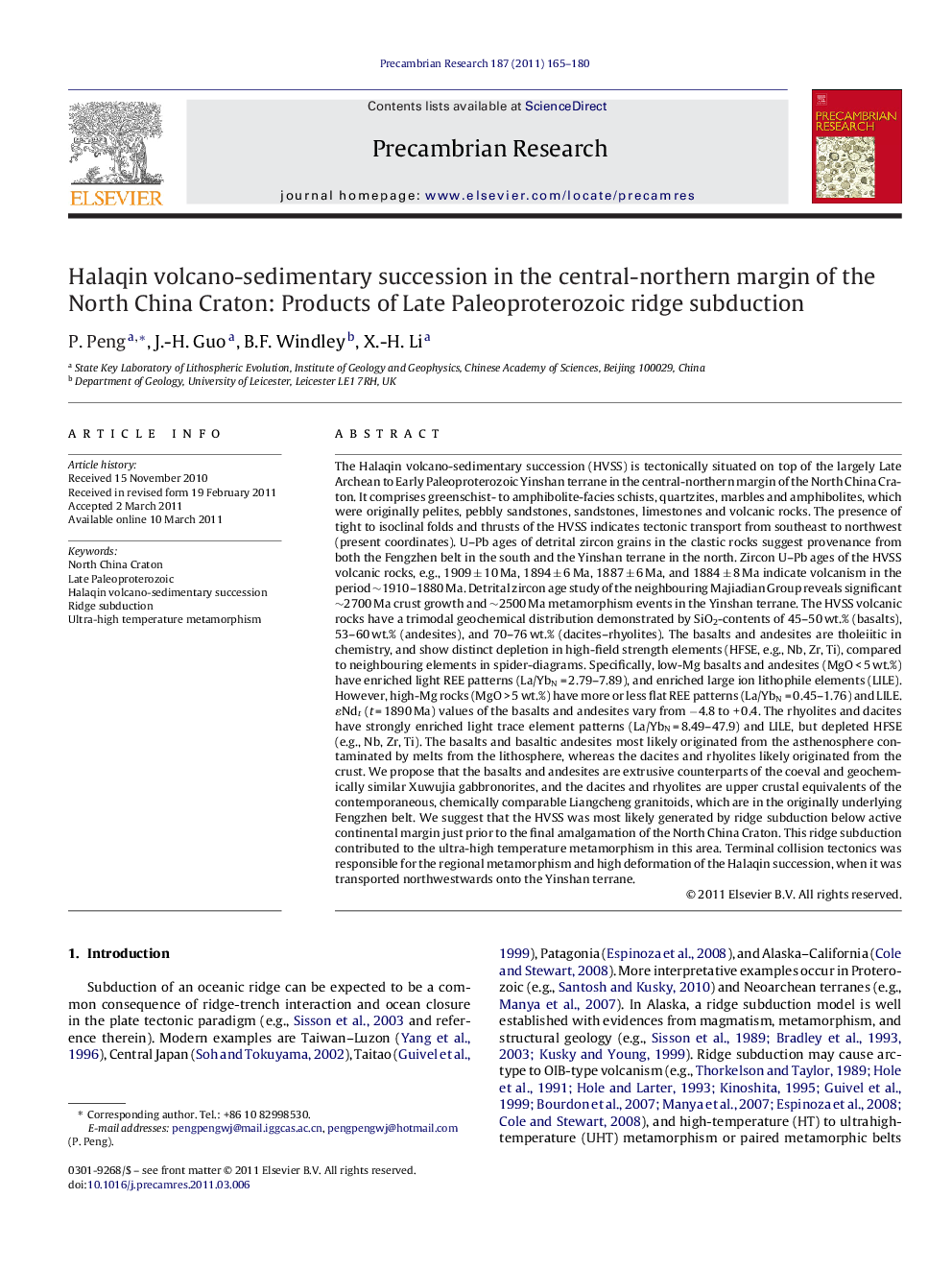| Article ID | Journal | Published Year | Pages | File Type |
|---|---|---|---|---|
| 4723844 | Precambrian Research | 2011 | 16 Pages |
The Halaqin volcano-sedimentary succession (HVSS) is tectonically situated on top of the largely Late Archean to Early Paleoproterozoic Yinshan terrane in the central-northern margin of the North China Craton. It comprises greenschist- to amphibolite-facies schists, quartzites, marbles and amphibolites, which were originally pelites, pebbly sandstones, sandstones, limestones and volcanic rocks. The presence of tight to isoclinal folds and thrusts of the HVSS indicates tectonic transport from southeast to northwest (present coordinates). U–Pb ages of detrital zircon grains in the clastic rocks suggest provenance from both the Fengzhen belt in the south and the Yinshan terrane in the north. Zircon U–Pb ages of the HVSS volcanic rocks, e.g., 1909 ± 10 Ma, 1894 ± 6 Ma, 1887 ± 6 Ma, and 1884 ± 8 Ma indicate volcanism in the period ∼1910–1880 Ma. Detrital zircon age study of the neighbouring Majiadian Group reveals significant ∼2700 Ma crust growth and ∼2500 Ma metamorphism events in the Yinshan terrane. The HVSS volcanic rocks have a trimodal geochemical distribution demonstrated by SiO2-contents of 45–50 wt.% (basalts), 53–60 wt.% (andesites), and 70–76 wt.% (dacites–rhyolites). The basalts and andesites are tholeiitic in chemistry, and show distinct depletion in high-field strength elements (HFSE, e.g., Nb, Zr, Ti), compared to neighbouring elements in spider-diagrams. Specifically, low-Mg basalts and andesites (MgO < 5 wt.%) have enriched light REE patterns (La/YbN = 2.79–7.89), and enriched large ion lithophile elements (LILE). However, high-Mg rocks (MgO > 5 wt.%) have more or less flat REE patterns (La/YbN = 0.45–1.76) and LILE. ɛNdt (t = 1890 Ma) values of the basalts and andesites vary from −4.8 to + 0.4. The rhyolites and dacites have strongly enriched light trace element patterns (La/YbN = 8.49–47.9) and LILE, but depleted HFSE (e.g., Nb, Zr, Ti). The basalts and basaltic andesites most likely originated from the asthenosphere contaminated by melts from the lithosphere, whereas the dacites and rhyolites likely originated from the crust. We propose that the basalts and andesites are extrusive counterparts of the coeval and geochemically similar Xuwujia gabbronorites, and the dacites and rhyolites are upper crustal equivalents of the contemporaneous, chemically comparable Liangcheng granitoids, which are in the originally underlying Fengzhen belt. We suggest that the HVSS was most likely generated by ridge subduction below active continental margin just prior to the final amalgamation of the North China Craton. This ridge subduction contributed to the ultra-high temperature metamorphism in this area. Terminal collision tectonics was responsible for the regional metamorphism and high deformation of the Halaqin succession, when it was transported northwestwards onto the Yinshan terrane.
Graphical abstractFigure optionsDownload full-size imageDownload as PowerPoint slideHighlights► ∼2.7 Ga crust growth and ∼2.5 Ga metamorphism exist in the west North China Craton. ► ∼1.9 Ga ridge subduction happened prior to amalgamation of the North China Craton. ► Ridge subduction is responsible for the ultra-high temperature metamorphism.
